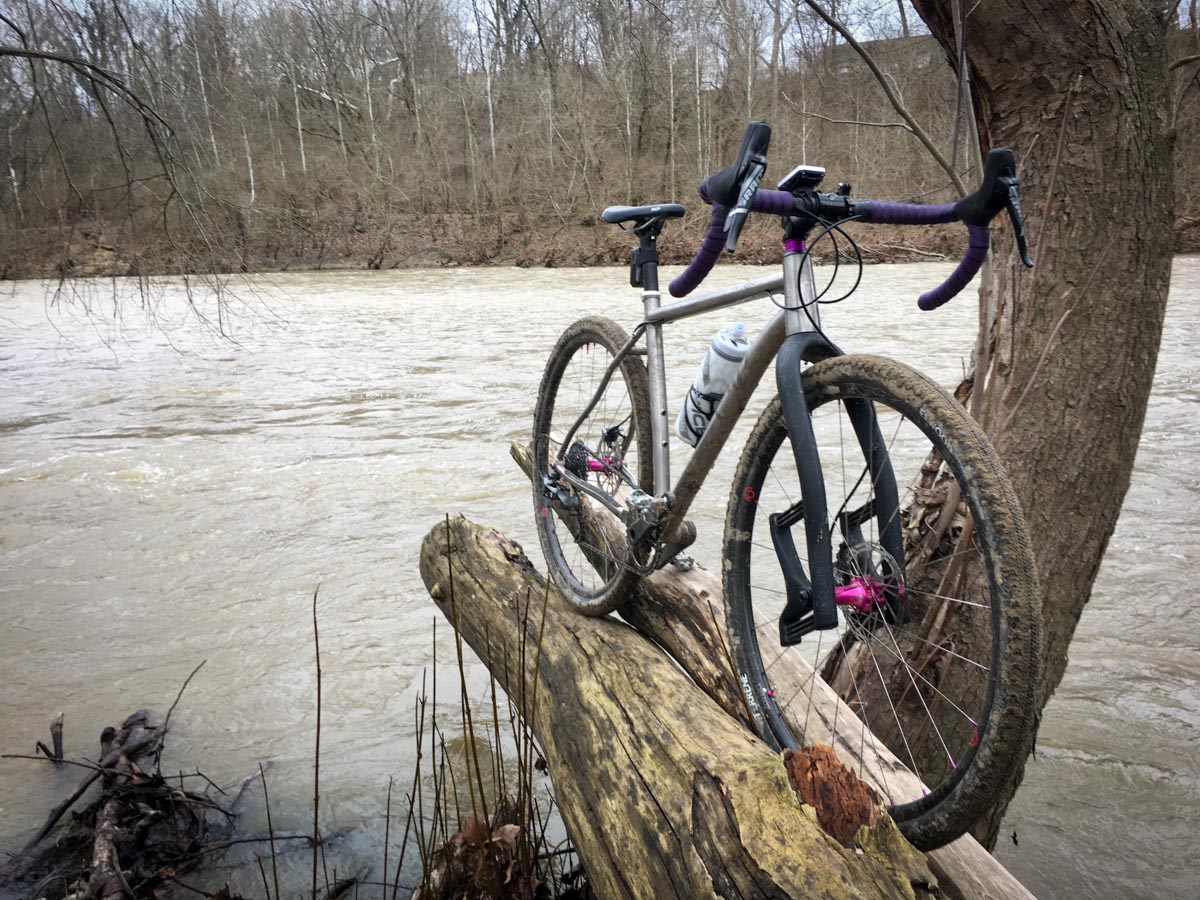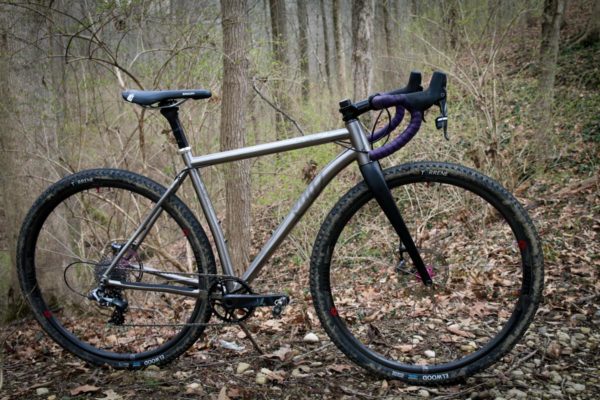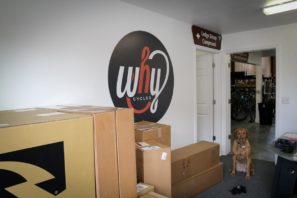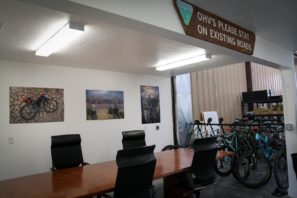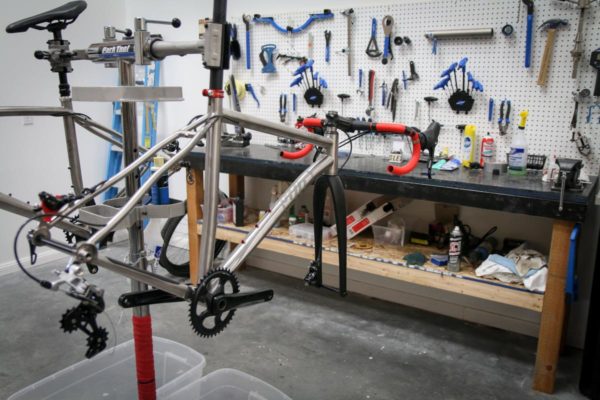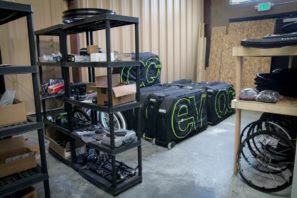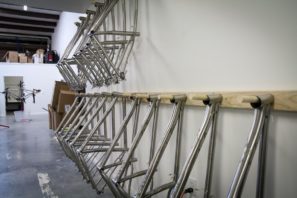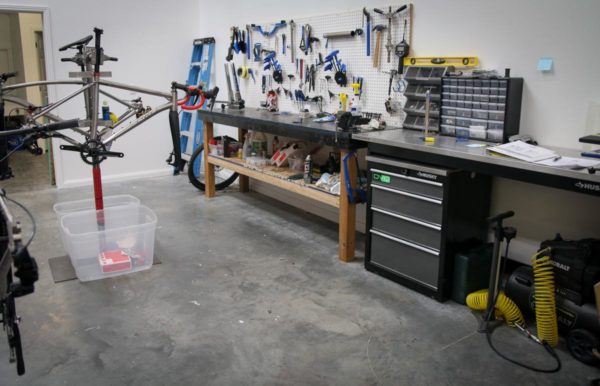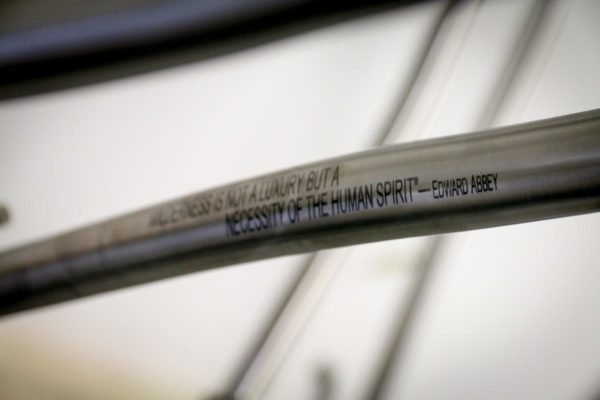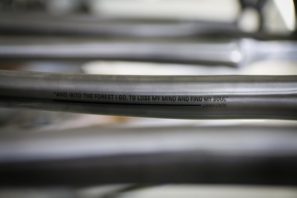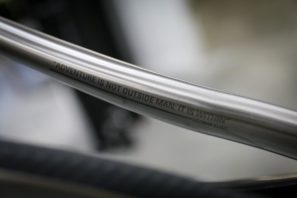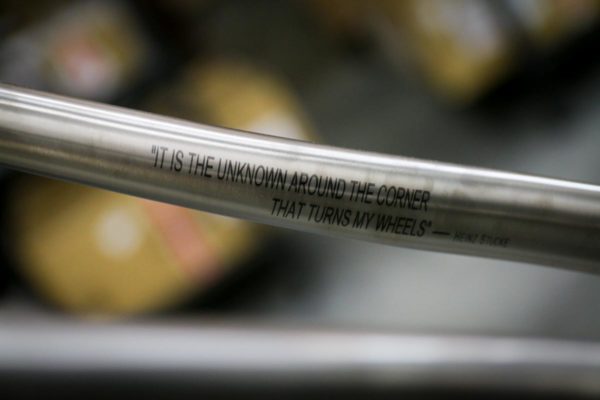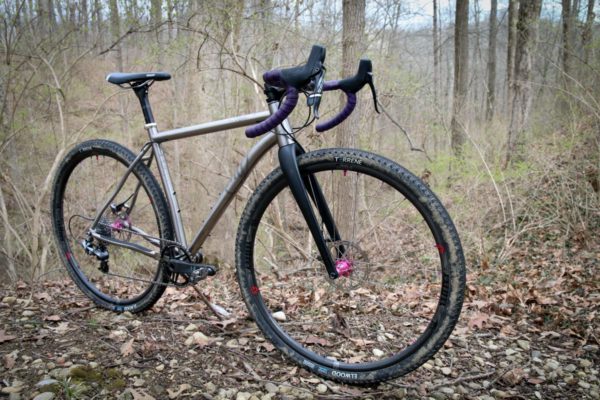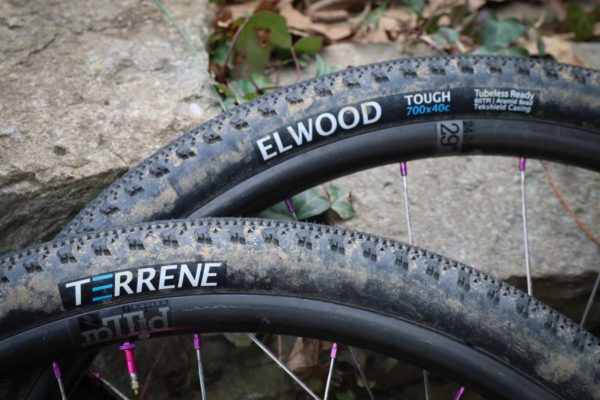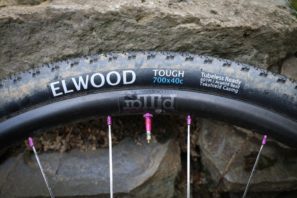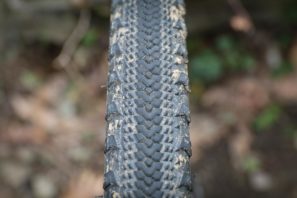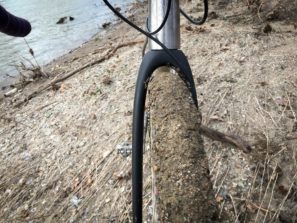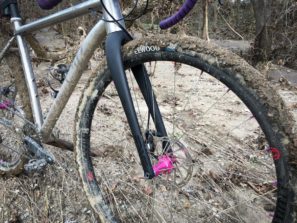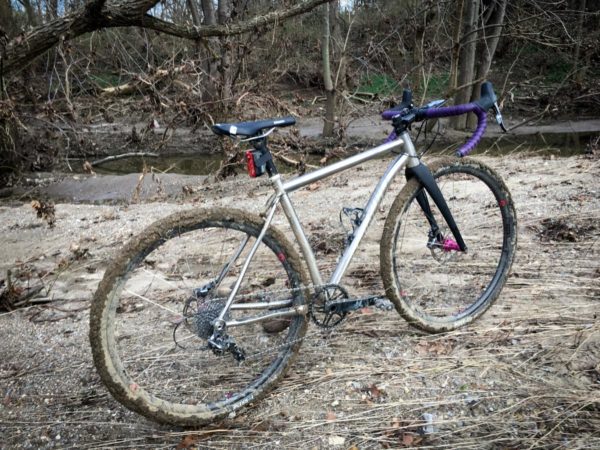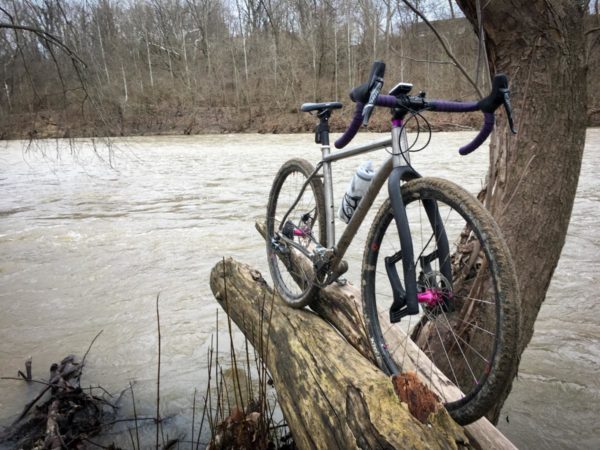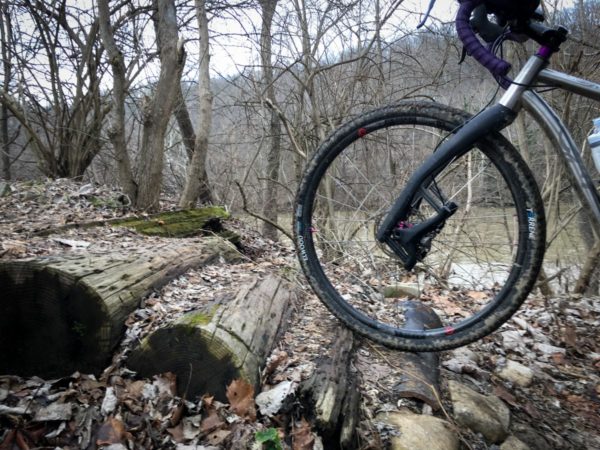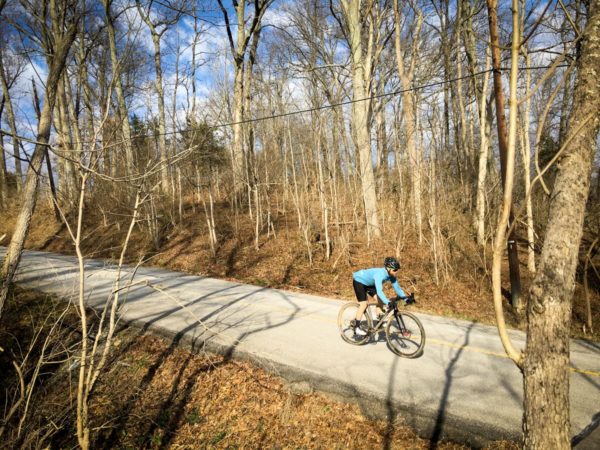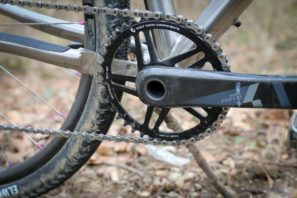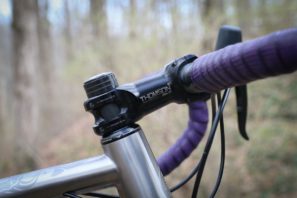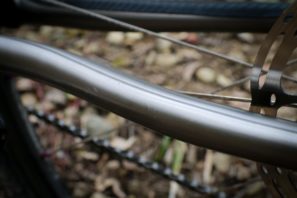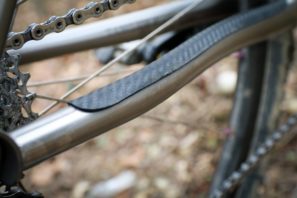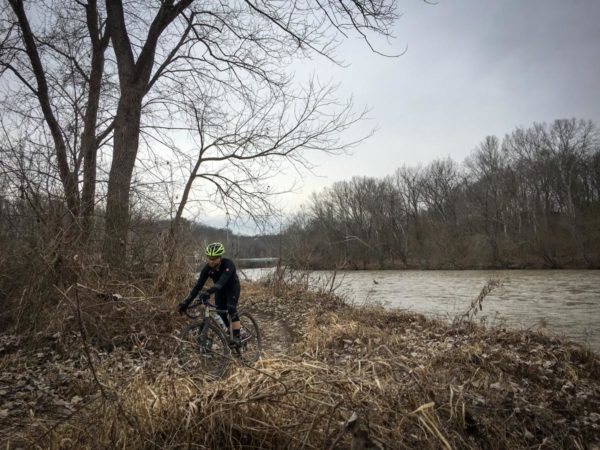One of the most significant drop bar developments of the past few years has been the proliferation of gravel or adventure road bike. Fitted with wider tires, more tire clearance, and geometry better suited towards long days on varied terrain, these bikes are helping riders to expand their horizons of what a “road” ride can be.
They’re also providing a chance for companies like Why Cycles to create road bikes with a heavy slant towards versatile fun. No longer confined to preconceived notions of what a road bike is capable of, gravel/adventure bikes really inspire you to take that bit of single track off the side of the road and see where it leads. And when it comes to titanium gravel bikes of a fun disposition, the R+ may just be one of the best…

Why HQ
Based out of a tiny warehouse space near Ogden, Utah, Why Cycles is the creation of Adam Miller and Ben Craner. Before Why, we’ve written about Adam’s designs, only with much fatter tires when he co-founded Borealis Bikes. After leaving the company a few years ago, Adam needed a new project, so with the help of Jason Schiers and Ben, Why Cycles was created to make beautiful titanium bikes that they would want to ride.
While the actual production of the frames occurs over seas, every Why Cycle is assembled in Ogden then shipped out in one of their custom Evoc bike bags. Crafted form grade 9 3/2.5 titanium with 6/4 used for the head tube, bottom bracket, and machined bits, Why Cycles backs up their frames with a lifetime warranty for the original owner, plus a crash replacement program.
Name that Quote
One cool little feature that I didn’t fully comprehend at first is the unique quote on the chain stay. I thought initially that all bikes had the same Nelson Mandela quote that was on my test bike, but it turns out that each frame is different. The quotes are hand picked by the Why Cycles team for things that inspire them. It’s sort of like a bicycle Easter egg – you won’t know what yours says until the bike arrives.
But enough about the company, let’s talk about the bike. One of three models, the R+ is clearly the most road bike like, but it’s also impossible to miss the mountain bike influence. Built with enough clearance for 700 x 44c or 27.5 x 2.1″ tires, the R+ can fit all but the largest rubber with mud clearance to spare.
During the course of the review, the R+ had two different tire sets – 40mm Maxxis Ramblers, and these 40mm Terrene Ellwoods. Both were excellent tires, but the Maxxis definitely had the edge for pure off road use, while the Terrene was a little better suited to mixed terrain thanks to the smooth center section and decently aggressive shoulder knobs. One thing I’ve noticed about Terrene tires is that they seem to need a bit more break-in than others, but after that point the grip just continues to improve.
In everything but the worst, stickiest river bottom mud, the tires cleared themselves pretty well. The important thing is that even when completely caked as shown above, the wheels still spun freely in the frame and fork.
Laufing All the Way
In addition to tires, I also had the choice of forks with the bike shipping to us with both a Lauf Grit suspension fork and the more standard ENVE Cross rigid. While Jayson and Tyler have already formed their own opinions on the Grit, I was curious what it would be like for what I assume is a bit more aggressive riding. After all, most of my “gravel” rides are just riding the roads and paths to sections of single track around town normally reserved for mountain biking.
In that regard, it turns out that I’m a pretty big fan of the Lauf in the right situations. Admittedly, I was very skeptical of the fork when they first broke out onto the scene. I had a lot of the same concerns – the lack of damping, the potential for flex, the looks? However, I was intrigued enough to give it a shot and I’m glad I did.
If the majority of your riding is on smooth pavement or relatively flat gravel, the Grit is probably overkill. But if you like to charge technical sections with abandon and not worry so much about your line choice, that’s when the Grit really shines. To attempt to capture what I feel is going on with the fork, I decided to film this log section in slo-mo a few different times. Using tires inflated to the same 50 psi, one run was on the Lauf, and the other on the ENVE. No matter how many times I took a run at it, it always seemed faster on the Lauf, and like the bike was bouncing less – especially the sort of seesawing between the front and rear wheels. Is this a scientific test? No. Would damping improve the ride? Possibly. But it also would increase the weight – as well as increase the maintenance, complexity, and decrease durability.
At the end of the review, after riding both forks, if it was my bike the Lauf would go back on. The weight penalty isn’t huge, and it only shows any unwanted suspension movement under the heaviest sprinting. However, just because it works for me doesn’t mean it will work for everyone. One of its biggest flaws in my eyes is the fact that there is only one spring rate. That means whether you’re 110lbs or the limit of 242lbs, you’ll be on the same fork setting which certainly wouldn’t be the case with an air spring. At 150lbs, I found the spring to be a bit on the heavy side, which makes sense since I’m on the light spring for their Carbonara fat bike fork.
That’s not to say that I didn’t enjoy the bike in its rigid form. It almost feels like two completely different bikes. With the Lauf the R+ turns into a single track shredder, and with the ENVE it’s more of a fat tire dirt road bike. Both are excellent choices.
Changes from Stock?
To make it work for me, the stock build needed two tweaks. It needed a slightly shorter stem (90mm) and it needed a smaller chainring up front. The stem is pretty self explanatory. The chainring is a little different. Because the R+ is so capable off road, I found myself constantly wanting lower gears for steep, punchy climbs on the trail. The trade off is losing high end gearing on the road, but if I had to choose for the way I was riding the R+, lower gearing made more sense.
Really, the only negative I came away with was the clearance at the chain stays for your ankles. Fortunately, after speaking with Adam, he mentioned that the issue had already been addressed and that production bikes offer quite a bit more clearance than the sample that I was on. However, since the frame is titanium, it’s almost impossible to see where my heels were hitting, making it more of an annoyance than anything.
Riding Away
On the surface, the R+ is an efficient, go anywhere road monster, but it’s when you get into the twisty, techy bits that the bike comes alive. Of all the gravel/adventure bikes I’ve ridden, this is easily one of my favorites which probably says something about the amount of mountain bike DNA built into the frame. Thanks to geometry tweaks like a slightly lower bottom bracket (285mm) for better cornering and handling, and a longer top tube for decreased toe overlap and slightly shorter stems, the R+ does not shy away from aggressive riding. The toe overlap issue is pretty big, especially when you’re trying to get rad in technical sections – I love the fact that there was zero overlap for the small tested here. I also find it’s also one of the easiest drop bar bikes to wheelie – if that sort of thing appeals to you.
In the end, I feel like I barely scratched the surface of the R+ before it had to go back home. It’s such a versatile bike that you could build it as the trail ripper above, or a bike packing rig, or a fast fat tire road bike, or even a CX race bike. If fun on any surface is your goal, stop asking why and ask yourself, why not?
For more info on the R+ including the actual weight, check out our first post here. Why Cycles R+ frames start at $2,149 for the frame only (includes headset, seat collar, and Maxle), $2,649 for the frame and ENVE CX fork, then $4,499 for a complete Rival build or $5,999 for the Force group shown here only with Knight Composites wheels.
whycycles.com
